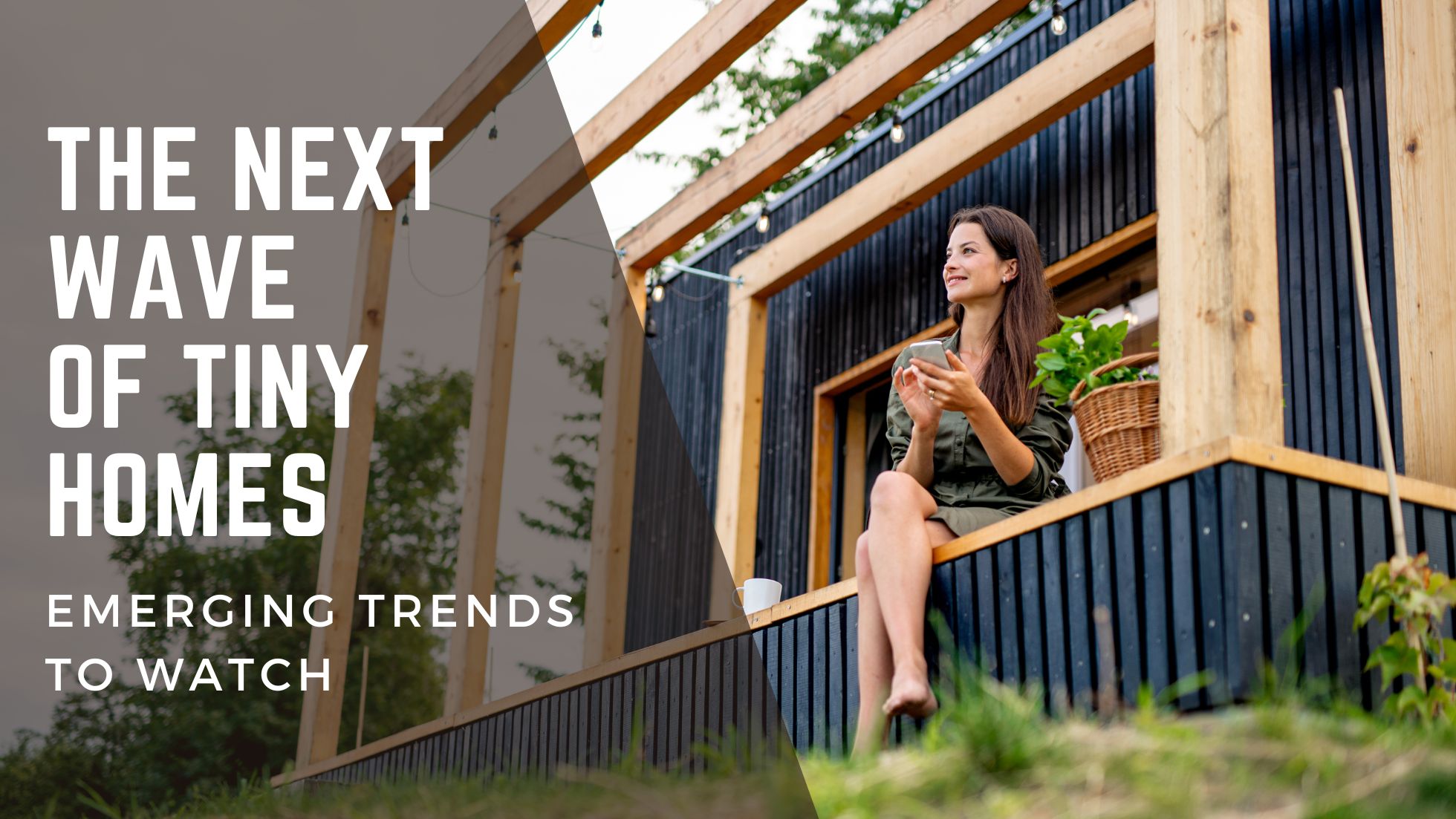
As urbanization rises and environmental concerns grow, tiny homes have become an appealing solution for many. Their appeal lies in their size and potential to address key issues like affordable housing, sustainable living, and efficient resource use.
Over the past decade, tiny homes have surged in popularity, symbolizing simplicity and sustainability—a growing awareness of the environmental and economic benefits of downsizing drives this movement. As people become more conscious of their ecological footprints and the need for affordable housing, tiny homes provide an innovative solution. They offer a way to live comfortably while using fewer resources and producing less waste.
The lifestyle associated with tiny homes encourages a shift towards minimalism. This philosophy reduces clutter and promotes a more intentional and meaningful way of living.
As we look ahead, the future of tiny homes holds interesting possibilities and trends worth exploring.
1. Smart Tiny Homes: Embracing Technology
The integration of smart technology is revolutionizing how we live, and tiny homes are no exception. Future tiny homes will increasingly feature smart systems to control lighting, security, and even furniture arrangements. Imagine a home where a voice command transforms your bed into a sofa or kitchen counter into a work desk. These innovations maximize space and make tiny living more convenient and enjoyable.
2. Sustainable Design: Net-Zero and Off-Grid Living
Sustainability is a key driver of the tiny home movement, and this focus will only grow stronger. Future tiny homes will increasingly be designed to operate independently of traditional infrastructure, using advancements in solar energy, battery storage, and water collection systems. This aligns with the growing desire for self-sufficiency and reducing one’s carbon footprint.
3. Vertical Tiny Homes: Innovative Space Utilization
The concept of vertical living is making its way into the tiny home movement. Vertical tiny homes maximize every square inch by incorporating multi-story designs and space-saving furniture. Lofted sleeping areas, folding desks, and wall-mounted storage solutions are just a few examples of how vertical space can be effectively utilized, adding architectural creativity to tiny home designs.
4. Community-Oriented Tiny Living: Tiny Home Villages
While tiny homes offer independence, there’s a growing trend towards community-oriented living. Tiny home villages, where multiple tiny homes are clustered together, provide a sense of community while maintaining privacy. These villages often feature shared amenities like gardens, co-working spaces, and recreational facilities, promoting social interaction and efficient land use.
5. Regulatory Changes and Zoning Laws
Navigating zoning and building codes has been a significant challenge for the tiny home movement. However, as the popularity of tiny homes grows, more regions are adapting their regulations to accommodate these dwellings. We can expect to see more flexible zoning laws and building codes that support tiny home living, making it easier for individuals to adopt this lifestyle without legal obstacles.
6. Aging-in-Place Tiny Homes
Tiny homes are not just for young, single individuals or couples; they also hold promise for the ageing population. Ageing-in-place tiny houses will be designed with universal accessibility in mind, featuring single-story layouts, wider doorways, and easy-to-navigate interiors. These homes allow seniors to downsize while maintaining independence and staying connected to a supportive community.
7. Hybrid Tiny Homes: Mobility and Adaptability
Mobility has always been a feature of many tiny homes, but future models will take this concept further by combining mobility with adaptability. Hybrid tiny homes might include modular components that can be reconfigured to suit changing needs or locations. This flexibility aligns with the growing trend of fluid work and living arrangements, allowing homeowners to change their environment without sacrificing comfort.
8. Design Aesthetics and Personalization
As the tiny home movement matures, there will be a greater emphasis on diverse design aesthetics and personalization. Tiny homes will reflect various styles, from minimalist and Scandinavian-inspired interiors to bohemian and rustic exteriors. This trend will challenge the notion that smaller spaces limit creativity, showcasing that tiny homes can be as unique and personalized as larger homes.
9. Eco-Friendly Materials and Building Practices
Future tiny homes will increasingly use eco-friendly materials and building practices. This includes using recycled materials, non-toxic finishes, and energy-efficient appliances. The goal is to create not only compact but also environmentally responsible homes, further reducing the ecological footprint of tiny home living.
10. Health and Wellness Features
Incorporating health and wellness features into tiny homes is becoming more common. This includes dedicated spaces for yoga and meditation, toxin-free building materials, and designs that maximize natural light. Adaptive lighting systems that change color and brightness throughout the day to support circadian rhythms will also become more prevalent, contributing to a healthier living environment.
Final Thoughts
From innovative technology and sustainable design to community-oriented living and personalized aesthetics, tiny homes are evolving to meet the needs of modern living. Embracing these trends will make tiny homes more livable but also more aligned with the values of sustainability, wellness, and flexibility. As we move forward, tiny homes will continue to offer a viable, attractive solution for those seeking a simpler, more sustainable way of life.
